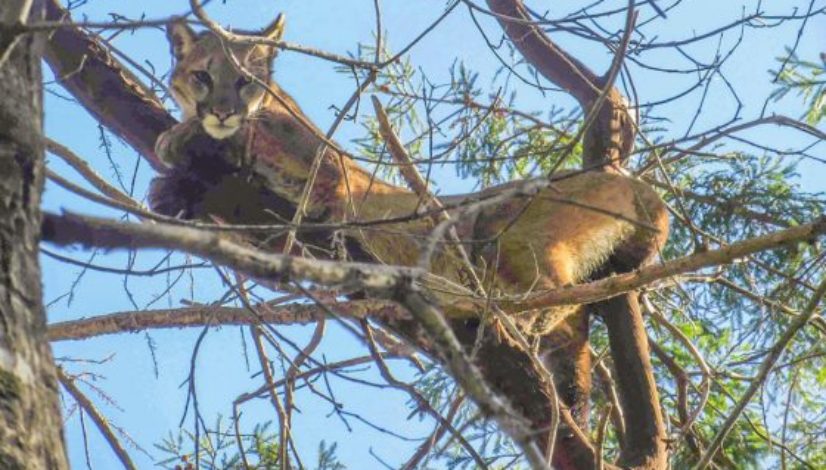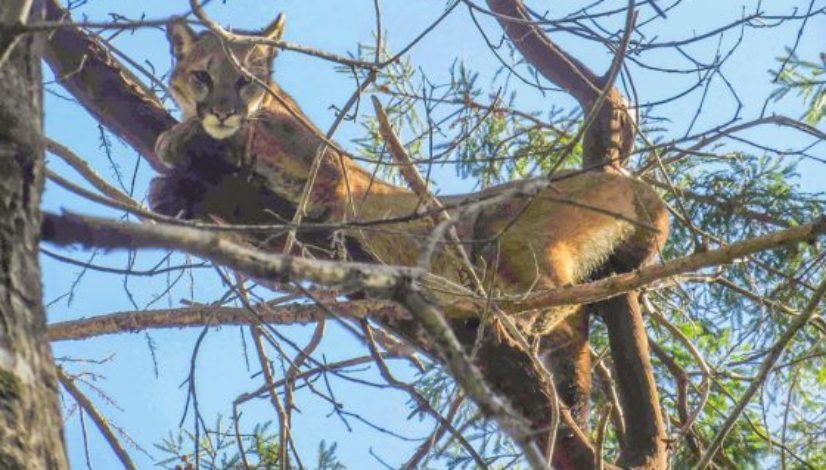Cannabis cultivation could threaten Santa Cruz mountain lions

Published: Dec 12, 2017, 12:53 pm • Updated: Dec 12, 2017, 1:24 pm
By Alex Fox, Santa Cruz Sentinel
SANTA CRUZ — Come Jan. 1, the cannabis farms peppering the Santa Cruz Mountains will enter new legal territory, but ecologists worry it may spell doom for the area’s mountain lions.
Mountain lions have called the Santa Cruz Mountains home for millennia. Their sensitivity to human impacts makes them a useful indicator of how cannabis cultivation among the redwoods could impact all wildlife, said Chris Wilmers, ecologist at UC Santa Cruz and head of the Puma Project. The project has been tracking and studying local mountain lions since 2008. Wilmers said he believes that cannabis cultivation may be the most imminent threat to mountain lions in the Santa Cruz Mountains.
If the footprint of cannabis growing increases in the mountains, Wilmers has two concerns. He said he worries that increased infrastructure and human presence will make mountain lions, who are famously averse to humans, abandon large swaths of habitat. He is also concerned that use of anticoagulant rodenticides, which can hamper mountain lions’ immune systems and are lethal in high doses, could increase along with cannabis cultivation.
Little grower growth
Early signs don’t seem to point to a swift increase in the number of growers in the mountains come Jan. 1. The current licensing system favors growers who can prove they’ve been in Santa Cruz for three years or more, as well as a host of other requirements.
“The regulations in the environmental impact report set really high bars,” said Robin Bolster-Grant, Santa Cruz County’s cannabis licensing manager. “Honestly, I expect the number of growers in the mountains to shrink. The costs of meeting the standards will be significant.”
But these same regulations could ramp up the environmental footprint of cannabis cultivation even if no new growers enter the Santa Cruz Mountains, said Wilmers. The preliminary plans require 20 foot wide roads and 120,000 gallon water tanks for fire safety.
“Adding infrastructure will negatively affect mountain lions. This drives them away more permanently,” said Wilmers. Additional infrastructure could also create barriers that inhibit the movement of other larger wildlife such as deer, bobcats and coyotes.
Anticoagulant-based rodenticides are intended to cause fatal internal bleeding in rodents, but, crucially, they’re not supposed to die quickly. Poisoned rodents can take up to 10 days to succumb to the poison – plenty of time to wander back into the forest to become a meal for a hungry predator, said Laurel Serieys, a UC Santa Cruz ecologist who studied rodenticide poisoning in bobcats.
Rodenticides banned
Though the most toxic rodenticides are banned from store shelves in California, they can still be brought in illegally from out of state or applied by pest control professionals. A number of the mountain lions Wilmers studies in the Santa Cruz Mountains have been exposed to rodenticides.
Residents of Bonny Doon watched an otherwise healthy-looking gray fox die before their eyes in 2016 just 30 feet from a local cannabis growing operation, according to eyewitness Eric Hoffman, who served on the Cannabis Cultivation Choices Committee. The fox’s body was sent to a California Department of Fish and Wildlife lab where its liver tested positive for four anticoagulant rodenticides.
Related stories
- Op-ed: Five years after Amendment 64, Colorado’s marijuana crop is getting greener
- Spokane County cannabis farmers will have to register at air pollution office
- Colorado Divide: Is hemp the answer for a rural county hoping to rely less on mining?
- Op-ed: America’s past holds clues for solving current issues with marijuana industry
- California’s cannabis farms under scrutiny to reduce their environmental impact
Some are concerned that any regulations restricting rodenticides will be difficult to enforce in the mountains.
“Whether they are officially banned or not people will use them. There is no way to regulate hundreds of grow operations in the mountains. If a regulator comes you just conceal the baits or you only put them out once in awhile or only at night,” said Wilmers.
Bolster-Grant is tasked with coordinating the enforcement of these regulations.
“We’ve promised the community in Santa Cruz County that our program will have a robust enforcement mechanism,” Bolster-Grant said.
She said she’s optimistic that clearer legal boundaries, unannounced inspections and increased funding for enforcement will help remedy what was historically something of a wild west in the mountains. The state will also have its own enforcement measures to ensure compliance for legal growers and to make illegal growing a risky endeavor for would-be black marketers.
No chemicals
The prevalence of rodenticide use among cannabis growers in the Santa Cruz Mountains is unclear, but growers indicate it’s frowned upon. “Historically these chemicals have been used only by unethical growers. That isn’t the majority of who’s out there in the mountains,” said Pat Malo, cofounder of the cannabis business coalition Green Trade Santa Cruz who also served on the committee.
An inclusive regulatory climate is the county’s best chance of ensuring growers don’t use these harmful chemicals, said Hezekiah Allen, executive director of the California Growers Association, a statewide cannabis advocacy group.
“Agriculture has environmental impacts, but unregulated agriculture has greater impacts. Regulation decreases those impacts,” said Allen said.
This story was first published on SantaCruzSentinel.com
Topics: California, environmental impact, pesticides, Santa Cruz County, wildlife




